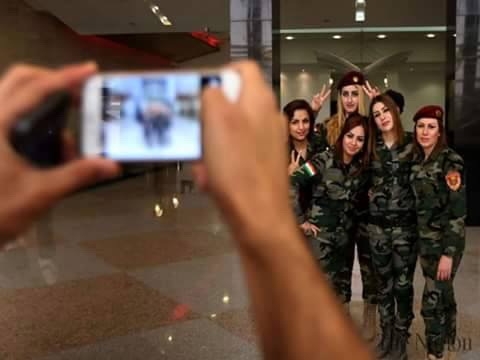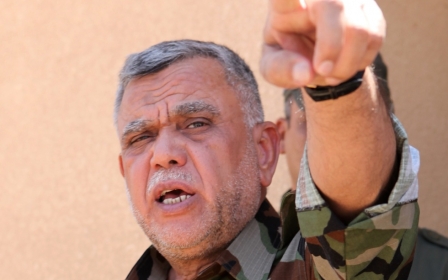After years of war, militarisation is widely welcomed by Iraqis

BAGHDAD - ”I will kill Daesh. My dad brought me this uniform and this gun to kill them.” Four-year-old Ali points at his green-and-black army fatigues, smiling as he waves a toy rifle in the air.
”Dad said those who do not wear this uniform are Daesh and those who wear it are Iraqi,” said Ali.
Ali’s understanding of Iraq as being divided into those fighting for and against the militants of the Islamic State group known as ‘Daesh’ - who have seized large parts of the country - might seem crude but in Iraq’s violent and increasingly militarised society it’s a view that has become pervasive.
Ali’s father is a soldier. His uncle works as a commander in the Popular Mobilisation Force, a coalition of mainly Shiite militias enlisted by the government last year to fight IS.
“Both of them usually come home in their uniforms with their pistols in their belts,” said Zahraa, Ali’s mother, a recent graduate of Baghdad University, referring to her husband and brother-in-law.
“They tell all of the family about what they faced on the front lines and teach us what to do in case the militants attack us,” said Zahraa proudly.
Ali is one of tens of thousands of Iraqis, including children, young men, women and government officials, who, in an apparent show of solidarity for the army, have been swapping civilian dress for military attire.
Last month university students in Baghdad and Erbil posted photos on social media of themselves posing in army fatigues at their graduation ceremonies.
“It’s a simple way to show support for our troops fighting Daesh,” said Lena, a 20-year-old student attending her brother’s engagement party last week in a turquoise uniform similar to that of Iraq’s national guard.
“It’s the fashion now and I like it,” she said.
In a farmhouse in southern Baghdad that belongs to Ali’s grandfather, support for the army is on full display.
Ali’s aunt wears trousers made of dotted khaki fabric. A cousin is dressed in a shirt bearing a photo of a bearded Shiite militiaman holding a sniper rifle. Below him are written the words “Ela Tahain,” “There is nothing to do but crush the enemy.”
“These kind of clothes are very popular nowadays. There’s big demand for it so we have had to provide it,” Mohammed, a wholesaler in Shourja, the largest wholesale market in Baghdad, told MEE.
“Now we have started providing shops with lingerie made of dotted khaki fabric,” said Mohammed. “There is a big demand for it, too.”
Training camps for war
Iraq’s militarisation goes beyond the posters of Shiite militia leaders and the black banners in Baghdad documenting young men killed by IS.
Last month Ahmed al-Safi, a representative of Ayatollah Ali al-Sistani, the most revered Shia cleric in Iraq, called on schools and universities to take advantage of the summer vacation and teach students how to use weapons in order that they “be prepared to ward off the risks faced by the country”.
Dozens of training camps that teach students and volunteers basic combat skills as well as how to operate weapons, have since sprung up across the country.
“This is a proactive measure. The terrorists have said they will target the central and southern (Shiite) provinces,” said Ahmed al-Asadi, the spokesman of the Popular Mobilisation Forces.
“Training does not mean militarising the society; it means being prepared to face any potential danger,” said Asadi.
According to some psychologists, the growing military psyche comes from feelings of fear and anxiety after decades of conflict and uncertainty.
”Iraqis feel forced to mobilise in the face of gangs and militants which threaten all of them,” said Shaimaa Abdulaziz, a professor of psychology at Baghdad University.
”Being armed, wearing fatigues, owning army memorabilia… it’s people’s way of expressing their fears,” said Abdulaziz.
Middle East Eye propose une couverture et une analyse indépendantes et incomparables du Moyen-Orient, de l’Afrique du Nord et d’autres régions du monde. Pour en savoir plus sur la reprise de ce contenu et les frais qui s’appliquent, veuillez remplir ce formulaire [en anglais]. Pour en savoir plus sur MEE, cliquez ici [en anglais].





